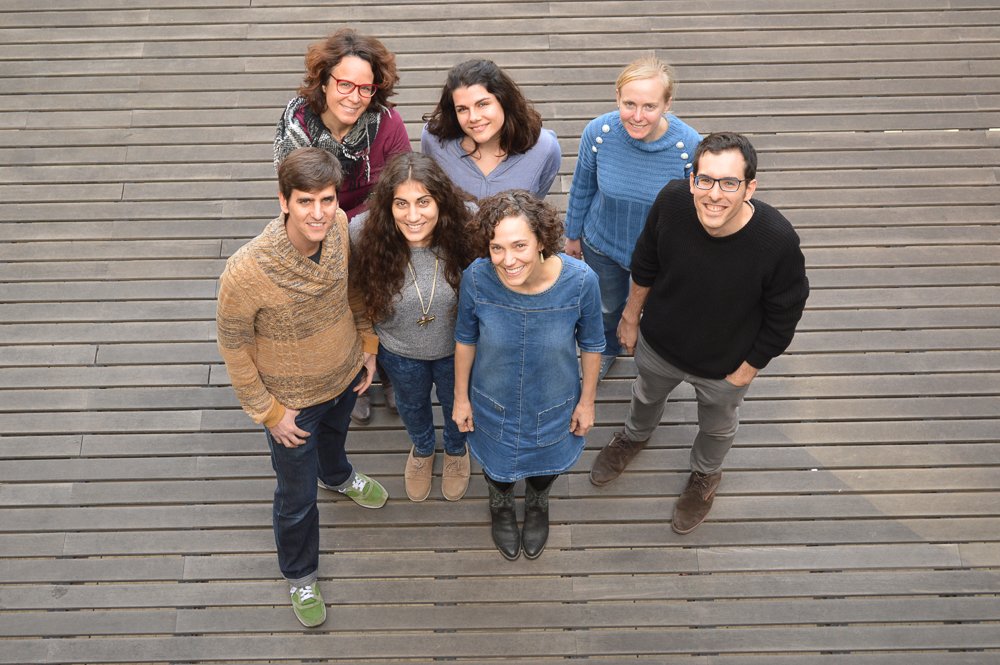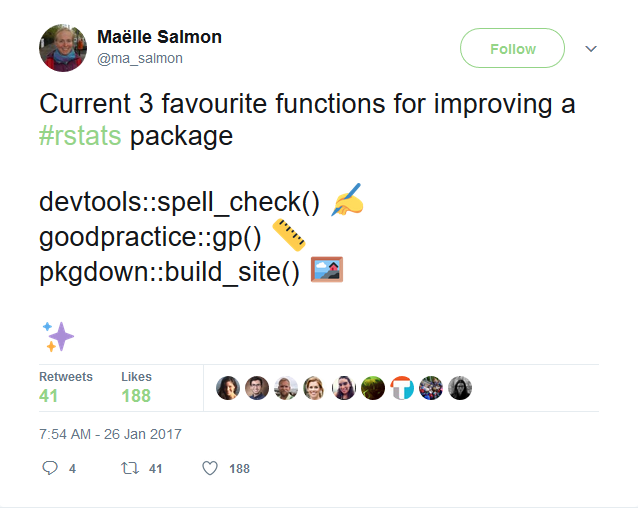At my day job I’m a data manager and statistician for an epidemiology project called CHAI lead by Cathryn Tonne. CHAI means “Cardio-vascular health effects of air pollution in Telangana, India” and you can find more about it in our recently published protocol paper . At my institute you could also find the PASTA and TAPAS projects so apparently epidemiologists are good at naming things, or obsessed with food… But back to CHAI! This week Sean Lopp from RStudio wrote an interesting blog post about internal packages. I liked reading it and feeling good because we do have an internal R package for CHAI! In this blog post, I’ll explain what’s in there, in the hope of maybe providing inspiration for your own internal package!

As posted in this tweet, this pic represents the Barcelona contingent of CHAI, a really nice group to work with! We have other colleagues in India obviously, but also in the US.
A few months ago rOpenSci’s Scott Chamberlain asked me for feedback about a new package of his called crul, an http client like httr, so basically something you use for e.g. writing a package interfacing an API. He told me that a great thing about crul was that it supports asynchronous requests. I felt utterly uncool because I had no idea what this meant although I had already written quite a few API packages (for instance ropenaq, riem and opencage).
So I googled the concept, my mind was blown and I decided that I’d trust Scott’s skills (spoiler: you can always do that) and just replace the httr
dependency of ropenaq by crul. Why? First of all note that Crul is a planet in Star Wars whose male inhabitants are called crolutes which sound quite cool (there are female ones as well, called gilliands which doesn’t sound like the package name) and which I now use as a synonym for “user of the crul package”. But I had other reasons to switch… that was the subject of my lightning talk today at the French R conference in Anglet. In this blog post I’ll tell the story again, with a bit more details, in the hope to make you curious about crul!

Pic by ThinkR, thanks Colin/Diane/Vincent!
On Tuesday I gave a talk at a meetup of the R users group of Barcelona. I got to choose the topic of my talk, and decided I’d like to expand a bit on a recent tweet of mine. There are tools that help you improve your R packages, some of them are not famous enough yet in my opinion, so I was happy to help spread the word! I published my slides online but thought that a blog post would be nice as well.

I don’t think rOpenSci’s Jeroen Ooms can ever top the coolness of his magick package but I have to admit other things he’s developped are not bad at all. He’s recently been working on interfaces to Google compact language detectors 2 and 3 (the latter being more experimental). I saw this cool use case and started thinking about other possible applications of the packages.
I was very sad when I realized it was too late to try and download tweets about the Eurovision song context but then I also remembered there’s this famous tennis tournament going on right now, about which people probably tweet in various languages. I don’t follow the French Open myself, but it seemed interesting to find out which languages were the most prevalent, and whether the results from the cld2 and cld3 packages are similar and whether they’re similar to the language detection results from Twitter itself.
I’ll admit I didn’t really know who Bill Nye was before yesterday. His name sounds a bit like Bill Nighy’s, that’s all I knew. But well science is all around and quite often scientists on Twitter start interesting campaigns. Remember the #actuallylivingscientists whose animals I dedicated a blog post? This time, the Twitter campaign is the #BillMeetScienceTwitter hashtag with which scientists introduce themselves to the famous science TV host Bill Nye. Here is a nice article about the movement.
Since I like surfing on Twitter trends, I decided to download a few of these tweets and to use my own R interface to the Monkeylearn machine learning API, monkeylearn (part of the rOpenSci project!), to classify the tweets in the hope of finding the most represented science fields. So, which science is all around?


